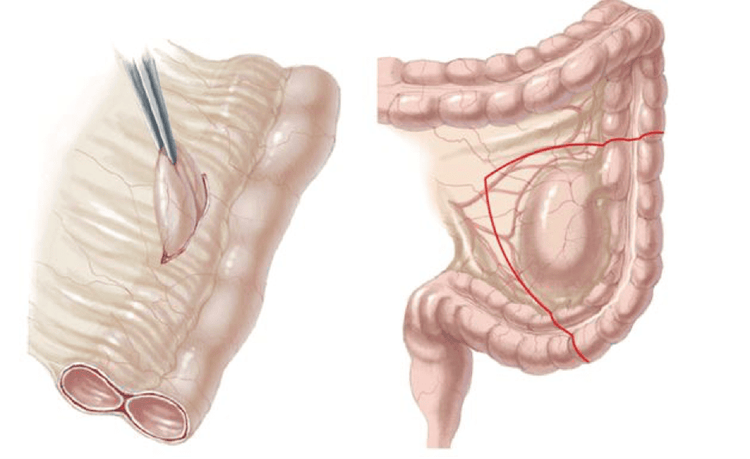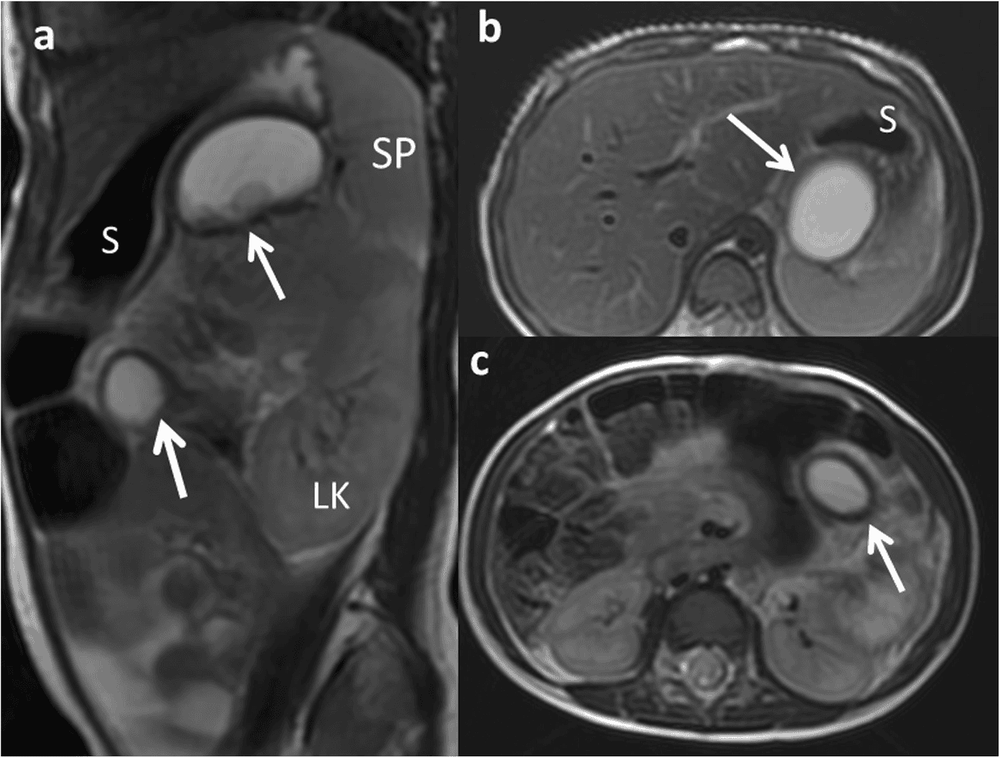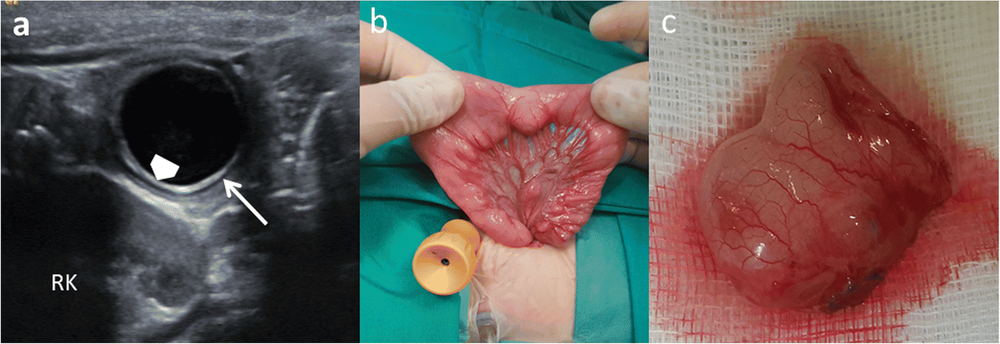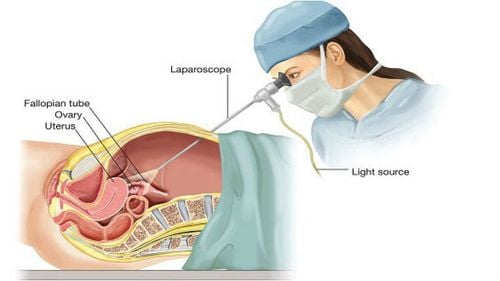This is an automatically translated article.
The article is professionally consulted by Specialist Doctor II Le Thanh Cam - Pediatrician - Pediatrics - Neonatology - Vinmec Danang International General HospitalDouble bowel cysts are rare congenital lesions of the gastrointestinal tract in infants and young children. This abnormality can occur anywhere from the mouth to the anus with very different clinical manifestations. Depending on the age, physical condition and location of the lesion, the final treatment is always surgical resection of the entire double bowel. In particular, laparoscopic surgery is always the preferred method of choice.
1. What is a double bowel cyst?
Double bowel cysts are rare congenital lesions of the gastrointestinal tract, usually first diagnosed in infancy and early childhood. Despite this, in adulthood, this pathology is also detected with the same frequency.
Double bowel cysts can occur anywhere from the mouth to the anus with a reported incidence of about 1 in 4500 live births. Symptoms and clinical manifestations vary widely depending on the size, location, presence of gastric mucosa, and anastomosis with the normal bowel. Accordingly, patients may be hospitalized because of symptoms of intestinal obstruction, abdominal pain, gastrointestinal bleeding or intestinal infarction. In these situations, emergency surgical intervention in infants or young children is indicated, in order to localize the lesion and prevent the infection from spreading to the whole body, which is potentially life-threatening.

Taxonomically, about two-thirds of the cases of double bowel cysts are located in the abdominal cavity and more than half are in the jejunal-ileal segment. Other affected sites are:
Small intestine (44%) Colon (15%) Stomach (7%) Duodenum (5% -7%) Intrathoracic segment (4%) Anterior bowel during infancy fetus, pylorus, appendix, biliary tract (extremely rare) The cause of duodenal cyst is not fully understood but is generally due to abnormalities occurring during infancy.
Structurally, double intestinal cysts always have an intimate attachment to a segment of the gastrointestinal tract and they share a blood supply with this normal bowel segment. On histological examination, the double intestinal cyst had a well-developed smooth muscle layer and an inner mucosal layer similar to the mucosal layer derived from the lesion. In particular, gastric mucosa is the most common type, followed by pancreatic tissue, which leads to ulceration, intestinal perforation and severe bleeding in the gastrointestinal tract requiring urgent intervention.

2. How to treat a double bowel cyst?
Because lesions in double bowel cysts are rare and can present with a wide range of clinical or even structural variations that may be encountered in different surgery, appropriate surgical intervention requires Ask the doctor's qualifications and experience, familiarize yourself with the anatomy and clinical features of these lesions.
However, regardless of the pathological structure, the final treatment is always surgical resection of the entire deformity. Even if they are asymptomatic, complete resolution of double bowel cysts minimizes the risk of recurrence as well as potential complications. In addition, for cases of malignant metaplasia, a rare complication of double bowel cysts, radical surgery may also reduce symptoms or prevent further malignant changes.
3. Laparoscopic surgery in the treatment of double intestinal cysts
With advances in medicine in general and the increasing application of laparoscopy in particular, this has become the first treatment to be considered in cases of double bowel cysts. As early as the 1990s, the first reports of endoscopic treatment of double bowel cysts recorded remarkable success. Since then, the role of laparoscopic surgery is mainly in the acute management of intra-abdominal diseases when there are no complications or complications are not too severe.
Compared with laparotomy, laparoscopic surgery has a gentler method, minimal skin invasiveness, shortens hospital stay, and the child quickly recovers mobility during this period. Postoperative. Accordingly, the anesthetic process is the same, but if laparotomy approaches the surgical field with a large skin incision, laparoscopic surgery only requires 3 very small skin incisions, just enough to bring in a light source and a receiver. imaging and instruments to manipulate the abdomen. Therefore, the postoperative wound after laparoscopic surgery is very small, highly aesthetic, causes little pain as well as the risk of wound infection later.

Laparoscopic techniques and strategies for the management of double bowel cysts are essentially two-pronged: (1) simple cystectomy with closure of the gastrointestinal wall defect with sutures or staples or ( 2) cyst dissection combined with drainage. The choice of technique depends on the surgeon's assessment of the child's condition on admission, the anatomical abnormalities of the double bowel as well as the experience and skill of the surgical team.
However, there are many cases of double intestinal cysts with late admission, severe disease, complications of generalized peritonitis, laparoscopic surgery technique will be difficult to apply or sometimes need to switch to open surgery after endoscopic exploration of the field, assessment of lesions.
In summary, double bowel cysts are rare congenital lesions in children that lead to hospitalization in the setting of intestinal obstruction, abdominal pain, and gastrointestinal bleeding. Once confirmed by ultrasound or computed tomography, double bowel cysts require early surgical intervention to remove part of the damaged bowel and limit the risk of recurrence. With inherent advantages, laparoscopic surgery is often applied with minimal invasiveness, bringing early recovery to infants and young children.
Please dial HOTLINE for more information or register for an appointment HERE. Download MyVinmec app to make appointments faster and to manage your bookings easily.
Recommended video:Liver transplant saves the life of a 20-month-old girl with congenital biliary atresia














